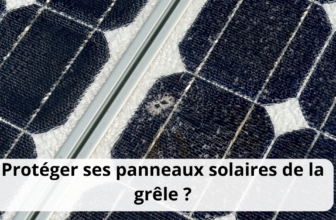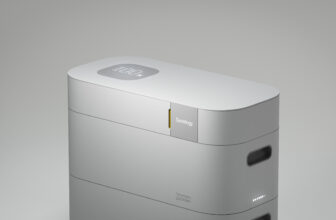The energy transition is underway, and it has never been so exciting! You thought you knew everything about solar panels? Wait a minute… A new technology, as promising as it is surprising, is arriving, thanks to the Helmholtz Center for Environmental Research in Germany: “living” solar panels. Yes, living, you read that right! These little gems of engineering integrate microorganisms capable of producing electricity. We explain everything to you.
A green revolution: when nature powers our homes
Traditional solar panels
have already helped democratize renewable energy. But they also have their limits. Their performance obviously depends on sunlight, and their manufacture requires materials that are sometimes rare and polluting.
This is where these new generation panels come into play. Their secret? Photosynthetic bacteria (like certain algae) that naturally generate electricity by absorbing sunlight. Unlike conventional photovoltaic cells, these living organisms directly transform solar energy into electrical current through their biological processes.
Imagine a solar panel that breathes, evolves and adapts to its environment… Yes, we are in the future!
How does it work exactly?
Behind this innovation, there is a fascinating scientific discipline: bioelectricity. Basically, certain bacteria have the ability to produce electrons when they perform photosynthesis. These electrons are then captured by electrodes and transformed into usable current.
One of the great advantages of this technology is that it works even in low light. Unlike traditional photovoltaic panels, bioelectric panels can produce energy even when the sky is overcast (which is rather good news for those living in the north of France, right?).
Another major advantage: their environmental impact is much lower. Unlike traditional panels, which require silicon and rare earths, these living panels use biodegradable and renewable elements.
An alternative to traditional solar panels?
It is difficult to say whether this innovation will completely replace traditional panels, but it could complement them in a truly effective way. In certain conditions where photovoltaic panels show their limits – low light, complex roof orientation, constant energy needs – living panels could make a valuable contribution.
Moreover, researchers are already working on hybrid versions combining the two technologies to maximize efficiency.
A technology accessible to all?
That is the big question. As with any innovation, it will probably take a few years before these “living” panels are available on a large scale and at an affordable price. But the first prototypes suggest a promising future.
One of the most interesting aspects is the possibility of producing these panels locally, with easily accessible natural resources. This could revolutionize access to energy in isolated areas or areas with little electrical infrastructure.
We can also imagine this technology being integrated directly into building materials, creating walls or roofs that can produce electricity themselves. After all, why install solar panels on the roof when the roof itself can become a source of energy?
Another step towards 100% green energy
The arrival of living solar panels is a real step forward for the energy transition. More ecological, more flexible and potentially less expensive, they are perfectly in line with a dynamic of reducing our dependence on fossil fuels.
So, of course, there is still a long way to go. Research must continue, performance must be optimized and production must be adapted on a large scale. But one thing is certain: we are only at the beginning of a new era of energy.






Please remain courteous: a hello and a thank you cost nothing! We're here to exchange ideas in a constructive way. Trolls will be deleted.